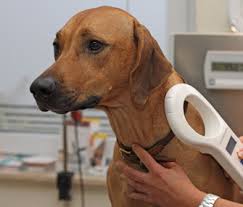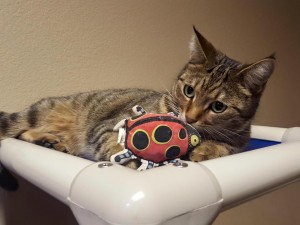Every summer, the news is filled with stories of dogs dying in hot cars, even here in Arizona where we should know better.
Our summers start early and are long and very hot, oftentimes with temperatures up into the triple digits. It’s important for pet owners to ensure their beloved furry family members are safe, cool and hydrated — and out of harm’s way. One of the most important things you can do for your pets is to leave them home.
Although it is not safe to leave your pets in the car at any time, remember that when it’s hot out, the situation is even worse. Even if you are just running into the store or leaving a window cracked open, the intense heat inside a car can threaten your pet’s health and can even result in death. Therefore, leaving the window cracked open does not help. For those who simply think they will only be five minutes in the store, how often do people get sidetracked or held up and that five minutes turns into a half hour or more? It’s just not worth the risk.
Remember, according to the American Veterinary Medical Association’s “Pets in Vehicles,” “The temperature inside your vehicle can rise almost 20º F in just 10 minutes. In 20 minutes, it can rise almost 30º F…and the longer you wait, the higher it goes. At 60 minutes, the temperature in your vehicle can be more than 40 degrees higher than the outside temperature. Even on a 70-degree day, that’s 110 degrees inside your vehicle!”
Having the facts about how hot it can get in your vehicle points to the perfect reasons to leave your pets at home while you shop or run errands. Your pets are safest when in a cool home with plenty of fresh water.
But what if you spot a dog in a hot car? What should you do?
Whatever you do, don’t ignore the situation and get involved. According to the Humane Society of the United States (HSUS) in “What to Do If You See a Pet in a Parked Car,”
- Get the car’s information, including make, model and license plate.
- If the car is parked near a business, ask store managers to make an announcement to see if the car’s owner can be located.
- Call your local police non-emergency number or animal control and give them the information.
According to the HSUS, it’s important to be informed about your town or city’s laws concerning leaving pets in hot vehicles. Have important numbers handy so that you can call for help. You can also ask retail store owners to post signs asking their patrons not to leave pets in hot cars. In addition, if your town does not have a law in place regarding pets in hot cars, start by contacting your local representatives.
The HSUS has an informative retro video. Watch it here.

 backyard and the landscaper forgets to shut the gate, and the dog gets out. When it happens, there’s no worse feeling than knowing your family pet is lost, out there alone and frightened and in possible danger.
backyard and the landscaper forgets to shut the gate, and the dog gets out. When it happens, there’s no worse feeling than knowing your family pet is lost, out there alone and frightened and in possible danger.

Recent Comments